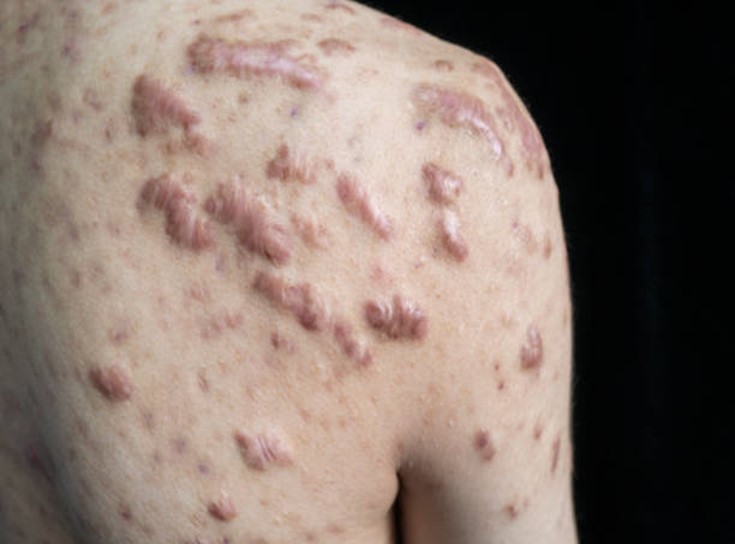Therapeutics for Keloids and Other Fibrotic Disorders
Keloids are disfiguring, painful, and itchy, but benign fibrotic skin tumors or lesions characterized by excessive dermal fibroblast proliferation and collagen deposition. They occur in susceptible individuals due to abnormal wound healing. Keloids are understudied, difficult to treat, and predominantly affect dark-skinned individuals. Their incidence is estimated to be as high as 1 in 6 among African Americans, compared to around 1 in 1000 among white Americans, suggesting that genetic and/or epigenetic factors contribute strongly to keloid disease. However, the molecular mechanisms involved in driving keloid formation in susceptible individuals are unclear.
Currently there are no standardized treatments available for keloids and they have very high recurrence rates upon surgical resection alone. Intralesional steroids are commonly used, albeit with highly variable responses. Furthermore, although superficial radiation therapy is emerging as one of the most effective post-surgical adjuvant therapies to prevent keloid recurrence, it requires specialized equipment and its association with cancer therapy leads to reluctance among both providers and patients for its use in keloid therapy.
Despite advances in medical research, there is still a scarcity of methods and compositions that are effective in the treatment of keloids that do not require specializedequipment and/or trips to a medical facility, as does radiation therapy. Hence, we have applied a multiplatform approach to identify multiple cellular pathways that can be targeted for keloid therapy using combinations of existing FDA approved or preclinical drugs applied topically. These drugs should greatly expand options for keloid therapy, especially through topical application, leading to a more personalized treatment options.


